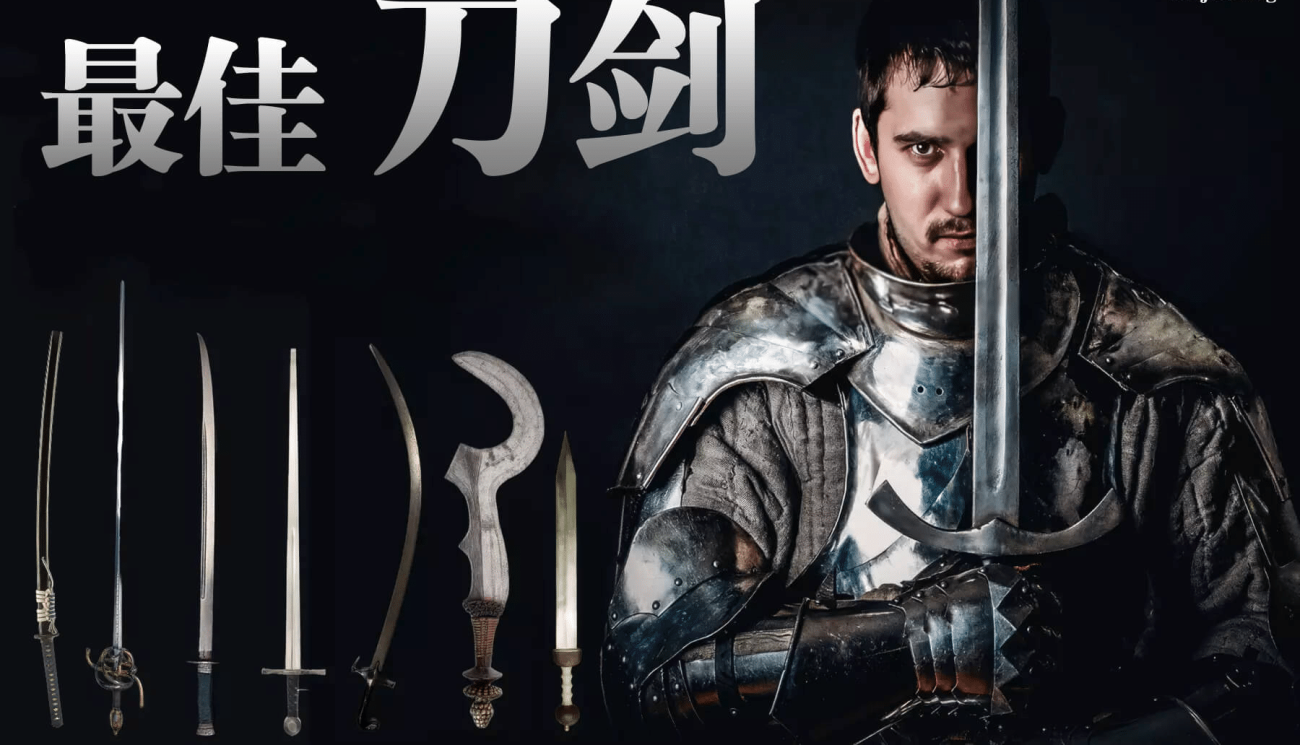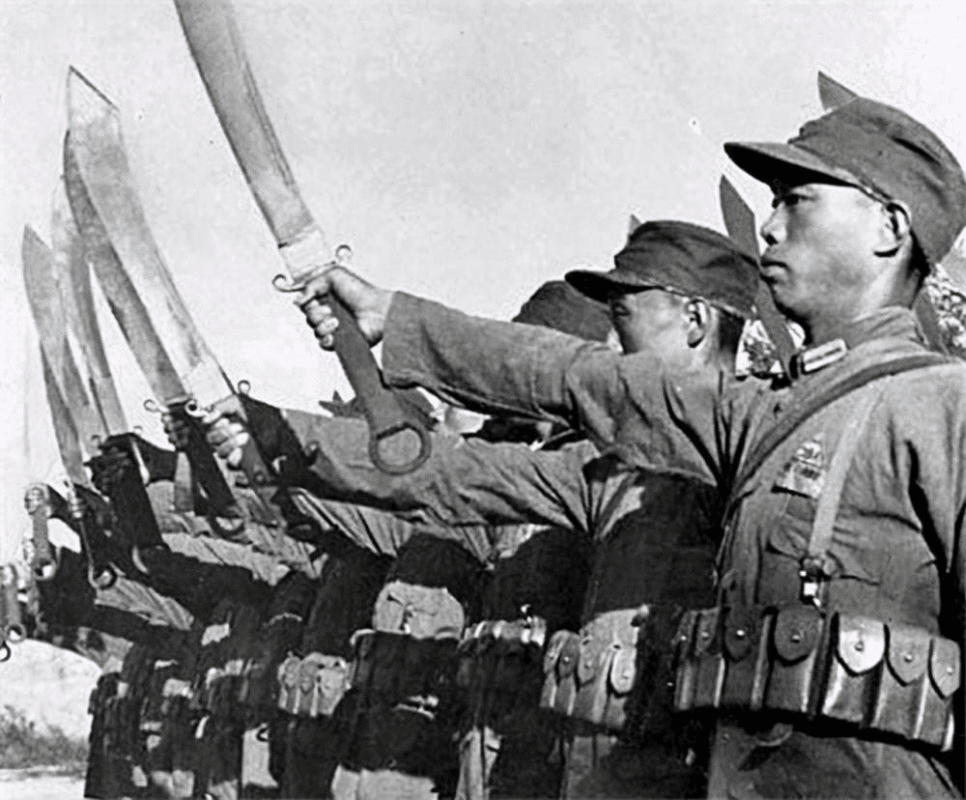Not all swords are created equal, and choosing the best one depends on the situation. Swords have evolved from sickle-shaped recurved blade tools to massive two-handed sweeping knives and back to thin single-edged scimitars. The moral of this evolutionary story is that sticking to a specific blade design doesn’t work historically.
As a result, there are many different sword designs – some better, some worse. In this article, heartswords.com explores 15 different historical battle scenarios and suggests the best sword for that situation. We also delve into the debate over whether there is a “best” sword.

Is there a best sword?
Simply put, there is no such thing as the best sword in history. If there was such a thing, why would swords continue to evolve and improve century after century around the world?
Just as you wouldn’t expect a sports car to be able to drive through thick mud without getting stuck, or a truck towing a heavy load to be able to easily navigate a curve, you can’t expect to find a sword that is superior to all other swords.
Each sword has a different purpose. Some are better in certain situations, while others are better suited for different scenarios.
1. Best for hacking and slashing: Samurai sword

The Japanese Katana is one of the best machetes, if not the best, because the soft curve of the handle and single-edged blade provides stability, flexibility, and precision.
While double-edged knives are also great for slashing, single-edged knives provide more room for taper on the edge. This is the case with many curved knives such as Messer knives, scimitars, or Chinese lancets.
The Katana sword is not superior to many other machetes in terms of speed, weight, reach, or flexibility, but the precision strikes it provides due to its large handle, small hilt, guard, and forward-shifted center of gravity make it the best machete.
2. Best for stabbing: Gladius

A thrust is the act of piercing a target with the tip of a blade. A straight double-edged sword that tapers from the guard to the tip or end of the blade is best suited for thrusting. This sword is ideal for striking an enemy wearing armor, as it can penetrate armor, gaps in armor, or pass through flesh and bone.
There are many swords that are well suited for thrusting in combat, including the Roman gladius, the Chinese sword, the arming sword, or the larger longsword.
The weapons that are best suited for thrusting, but also have various drawbacks, are the side sword, the rapier, and the small sword. All of these swords fall short in actual combat against armor, as they only perform well in combat with specific rules, such as not rushing at the opponent, not using hammer blows, etc. While the rapier will certainly win a thrusting contest, as its tapered blade is designed to pierce the target, in actual combat such a sword could be avoided or easily disarmed.
3. Best for cutting: Chinese broadsword

Cutting attacks differ from slashing attacks because they are intended to cut rather than to slash and leave a potentially fatal wound. The best cutting swords have wider, stronger blades with their center of gravity forward, focusing all of their power on the single-edged blade.
Based on these requirements, the Chinese broadsword is the best sword for cutting, as it has a single-edged blade for cutting and a spike for striking. This makes it a deadly and brutal sword. There are other two-handed swords that are also very good for cutting, such as the Dacian Falx, the Rhomphaia, the Scottish Claymore, and even the Turkish Kilij with a widened blade.
4. Best for Infantry: Armed Sword

For columns of thousands of armored infantry, the best sword was the short sword. These sturdy blades were about 20 to 30 inches long, allowing them to be used in small, tight melee positions and prevent friendly fire.
The gladius is an improved version of the gladius, which is often considered the standard for the best infantry formation sword due to its historical success. This medieval sword had several advantages – a crossguard that did not hinder mobility, a long blade that tapered like the gladius, a pommel that could be used for striking, and the versatility of being used with or without a shield.
5. Best for Cavalry: Scimitar

Cavalry swords are usually single-edged curved swords. The earliest curved swords in history were made to allow cavalrymen to use slashing attacks while on horseback. Although single-edged curved swords can be used on foot to slash like double-edged straight swords, curved swords combined with the speed and momentum of horses make them superior.
The best cavalry swords were the curved one-handed scimitar and the Chinese sword. The curved blades could inflict severe wounds and even penetrate gaps in armor. In addition, they provided hand protection and were less likely to embed into the target after an attack. The softer curved late European sabers were also well suited to fighting unarmored opponents.
6. Best for one-on-one combat (no rules) – Longsword

The best sword for a one on one duel is the European longsword, where melee swordplay can go in any direction and no rules need to be followed except survival. It is the most powerful weapon a swordsmith can build and a legendary sword, still taught in modern HEMA (Historical European Martial Arts).
The European longsword is a sword that can be wielded with one or two hands. It has a greater range advantage than most bladed weapons while remaining lightweight, with a cross guard providing significant protection and a solid pommel for striking. The center of gravity is located near the hilt, allowing for rapid strikes. It can be used on foot or while mounted, and the blade can penetrate gaps in armor.
The European longsword is definitely one of the most superior and powerful swords in history because it can be used in almost any type of combat.
7. Best for Duel: Rapier

A sword duel is a type of combat in which certain rules must be followed, such as not touching or pushing away the opponent’s blade, not charging the opponent, and not disarming the opponent. In these scenarios, certain types of dueling swords are superior to others.
The European rapier is considered the best sword for rule-based duels. It has a long blade that can easily injure an opponent’s hand if he is not adequately protected. It can withstand attacks from other dueling swords and can quickly counterattack and easily pierce an unarmored opponent.
8. Best suited for heavy armor: Chinese broadsword

Historically, swords were not designed to fight heavy armor. Nevertheless, swords performed well against heavy armor because they could inflict blunt force damage by penetrating armor that might not have been that strong at the time.
The Chinese broadsword is the best sword for fighting heavy armor. It is one of the most durable swords due to its wide, single-edged design. While it may not be the fastest or most flexible, it can penetrate the strongest armor made of modern steel. The broadsword relies on brute force, while the arming sword or longsword is the best choice for fighting heavy armor because it can penetrate the armor or the gaps in the armor.
9. The most intimidating sword: Ngombe Ngulu

While the Japanese swords wielded by samurai are impressive and cool, no sword is as intimidating as the African swords, and the most iconic of these is the Ngombe sword.
Due to its unique and horrifying design, the Ngombe sword has been the inspiration for many anime, video games, and movies. It has multiple sharp edges on its blade and a recurved hook at the tip of the blade, which allows for efficient cutting. Even more horrifying, the Ngombe was used to carry out gruesome executions.
10. Best for dual wielding: Chinese Oxtail Knife

Dual wielding is a controversial training method, the effectiveness of which is often questioned. Typically, smaller daggers, Chinese butterfly swords, or Japanese chopsticks are considered the most suitable weapons for dual wielding.
In our opinion, the best dual-wielding sword is the oxtail. These curved swords have a widened tip, making them effective against unarmored opponents. They are about the same length as a sword, but have a distinct reach advantage. Additionally, the oxtail’s guard can be split in half, allowing two knives to be carried in a single scabbard.
11. Best range advantage: German two-handed sword (Zweihander)

Having a reach advantage over the enemy sword often results in victory. Even modern HEMA practitioners can win duels with a 5 cm advantage. Range is essential, of course, but some swords have such a large reach advantage that they have the best range advantage.
The best swords to increase range without compromising the user’s defense are the European German two-handed sword, claymore, greatsword (Spadone), Chinese long sword, or Japanese nodachi. These greatswords, while not the best for single combat, are great for attacking from a distance and behind enemy lines.
12. Best for practical tasks: Machete

Some swords were used for more than just combat; they were also used for everyday tasks such as cutting through dense forests, brush, jungle, trees, ropes, and even digging in the ground when necessary.
The best swords for these tasks are machetes, as they have strong blades that hold their shape. Other options include the scimitars used by sailors; the Greek swords (Xiphos) and sickle swords used by ancient warriors; the Nepalese Gurkha knives, Turkish scimitars, and especially the Filipino knives with their traditional blade designs.
13. Best for hiding: cane sword

While swords have been used as primary or secondary weapons of war, some were designed for stealth and concealment. One of the most mysterious and secretive swords in modern media is the ninja sword, but it still has to be sheathed to be noticed.
That’s why the best swords for concealment are the European cane swords and the Japanese shigomi-jo. These sharp carbon steel blades are sheathed in a cane, which can be used for walking or disguised as part of your gear.
14. Best for fast attacks: Shashka

Sometimes, a quick draw is the key to saving your life. This is when you quickly draw your sword out of its sheath and strike your enemy. Generally, the katana is one of the best swords for this, thanks to the unique way it is held upside down when out of its sheath.
However, the sword best suited for fast attacks is the Chasik Saber. This one-handed, unguarded weapon has been tested and proven to be much faster than the Japanese sword. Despite being the same length, it is lighter than the katana because its thinner blade allows for a clean, critical strike, allowing for the fastest attacks.
15. Best protection: basket-handled broadsword

In sword fighting, protecting one’s hands was vital, as even a deadly sword would be rendered useless if the wielding hand was injured. As the use of armor declined during the Renaissance, the need to protect the hands of sword users became more pressing.
At this time, swords that could protect the hands of the wielder appeared. The basket-handled sword or broadsword best protected the hands of the wielder. As with the Indian pata sword, some basket-shaped guards limited the versatility of the sword. This led many sword enthusiasts to choose swords with cross guards for this purpose.

